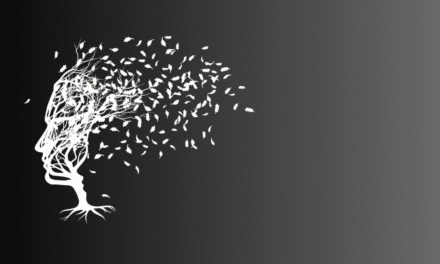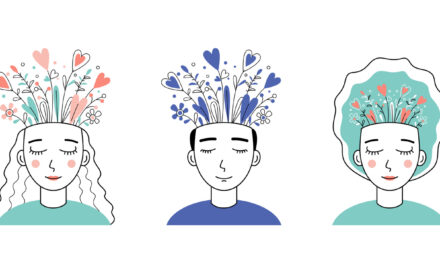COLAP WELLBEING CORNER
Got Grit?
Common Myths about Resilience
By Carrie Bowers
I was thinking about my stepson the other day. He is 24 now and towers over me, but back when he was in middle school, he was just a little guy who wanted to run. I remember going to one of his earlier cross-country meets and watching him pull up the rear, far behind his team. He was not, at that point, a very athletic kid, and he looked like he was not feeling too well. He slowed as he saw his teammates disappear over a hill in the road ahead of him, dropping to a heavy walk. I was worried. His passion was more centered on video games at the time, and he did not yet engage in regular physical activity. But after a few paces, I saw him lower his head, take a breath, and push into a faster gait. He picked up a little more speed and kept at it until he crossed the finish line while we all cheered. He was exhausted, but he also shone with pride. I don’t remember his time or placement, but I do remember saying to him afterward, “Kid, you sure got grit.”
But he had more than grit that day: he had a shift in mindset and leaned into his resilience. He took a breather and knew we would support him either way. Resilience is the art of turning challenges into opportunities for growth. However, there are many misconceptions about what resilience is and what it looks like in the context of our daily lives. By shining a light on a few of the more common myths below, we see that we can nurture resilience by leaning into personal growth, utilizing community support, and developing practical strategies for overcoming adversity.
Myth 1: Resilience means never giving up.
A common myth portrays resilience as relentless persistence and a refusal to back down, no matter what. When we inevitably hit a wall or experience self-doubt, it is easy to think that quitting means failure. Yet, true resilience is not about clinging to one path at all costs. It is about being flexible, adapting your approach, finding new ways to move forward, or simply changing your outlook on what success truly means to you.[i] Had my stepson been ill or injured, pressing on may not have ended well. Instead, he decided that finishing was more important than worrying about who came in first or last and that achieving his goal was worth a little discomfort. A study on adaptability shows that when people step back to reassess not just their situation and their original effort, but also their underlying beliefs about what it means to succeed, they create the flexibility to adapt. While this may cause short-term setbacks, those who consider alterative paths are more likely to achieve their goals in the long run. [ii]
Myth 2: Resilience requires autonomy and independence.
Another myth is that resilience means handling everything alone. In reality, most achievements are not the result of unassisted effort and attempting to manage entirely by yourself can leave you feeling stuck or defeated. In the legal profession, as in much of American society, people often fear asking for help, worrying it signals weakness. Yet real resilience means recognizing when support from others is necessary. Studies of caregivers show that the most resilient often seek help from family, friends, or their community, and are able to prevent long-term burnout.[iii] Rather than seeing resilience as something achieved solo, we should recognize that it depends on working together and supporting one another. By reframing isolating narratives like “I must do this alone and at all costs to prove myself resilient,” with “I can build resilience by adapting my approach and reaching out for support when needed,” we can make space for creativity, multiple perspectives, and social support.
Myth 3: Resilience is a hard-wired personality trait.
The last misconception, and perhaps the most damaging, is that resilience is innate. In reality, resilience is a skill anyone can cultivate over time. Research demonstrates that a growth mindset, the belief that our knowledge and abilities develop with training and support, is crucial for well-being.[iv] For example, a study on students found that those with a growth mindset performed better and felt less stress when facing challenges than those who believed human traits are fixed. Furthermore, students who practiced resiliency skills saw significant gains in stress management and well-being.[v] I witnessed this first-hand when my stepson moved on from running (not his passion) to focus his efforts elsewhere; now, he is a talented, and mostly self-taught, free-style rollerblader. By taking up a technically challenging sport, he was able to build both confidence and community.
Everyone will feel a sense of failure at some point in their lives. It can be so easy to tell ourselves, “I don’t have what it takes,” or “I am out of options.” In the legal profession, wherein perfectionism, responsibility, and expertise are baseline expectations, it can be easy to fall prey to self-doubt or burnout. And that’s okay! If you feel overwhelmed, or like you want to give up on a case, project, or even an employment situation, promoting resilience may mean taking a break to assess our approach and identifying where we can be flexible and adapt. In extreme cases, it might mean walking away from an untenable situation (if ethically feasible). Responding to setbacks with resilience could also mean talking through the issue with someone and accepting their support. Resilience is the ability to bounce back from trying times and situations, which can be fostered with time, practice, and support. By embracing the idea that crossing the finish line (or not!) is a lesson, rather than a goal, you can create a sense of purpose rooted in meaning rather than production. From that vantage point, any adversity is really just an opportunity to bounce back.
For more information about promoting resilience and well-being related strategies, please reach out to the Colorado Lawyer Assistance Program (COLAP) at info@coloradolap.org or (303) 986-3345 for a consultation and/or tailored referrals.
[i] King, D. D., & Burrows, D. Resilience in the goal hierarchy: Strategy change as a form of perseverance. In G. Todt, J. Backmann, & M. Weiss (Eds.), Work life after failure?: How employees bounce back, learn, and recover from work-related setbacks (pp. 99–108). Emerald Publishing. (2021).
[ii] Neo, D., & Chen, P. Leave to fight another day: Having the option to switch promotes a persistence trade-off. Motivation Science, 9(2), 131–143 (2023).
[iii] Buanasari, A., Rahman, A., & Gannika, L. (2023). Is resilience related to help-seeking behavior? A study on family caregivers of people with mental illness. Jurnal Keperawatan, 14 (1), 33-40.
[iv] Joyce, S., Shand, F. Bryan, R. A., Lal, T. J., & Harvey, S. B. (2018). Mindfulness-based resilience training in the workplace: Pilot study of the internet-based resilience@work (RAW) mindfulness program. National Library of Medicine, 20 (9).
[v] Yeager, D. S., & Dweck, C. S. (2012). Mindsets that promote resilience: When students believe that personal characteristics can be developed. Educational Psychologist, 47(4), 302–314.
ABOUT THE AUTHOR
Carrie Bowers is the Program Coordinator for the Colorado Lawyers Assistance Program and is a Certified Addiction Specialist (CAS). She received her B.A. from the University of Colorado Denver. Ms. Bowers has 10 years of experience as a paralegal and legal office administrator in boutique firms specializing in criminal defense, civil rights matters, and consumer bankruptcy. She brings to COLAP not only a strong legal administrative background, but also the compassion and dedication necessary to help Colorado’s legal professionals make the most of their lives and careers.
Maggie Kapitan, LMFT, Clinical Coordinator and Publications Liaison for the Colorado Lawyer Assistance Program, is the coordinating editor of this wellness series. Contact COLAP for free and confidential assistance at 303-986-3345 and info@coloradolap.org.





